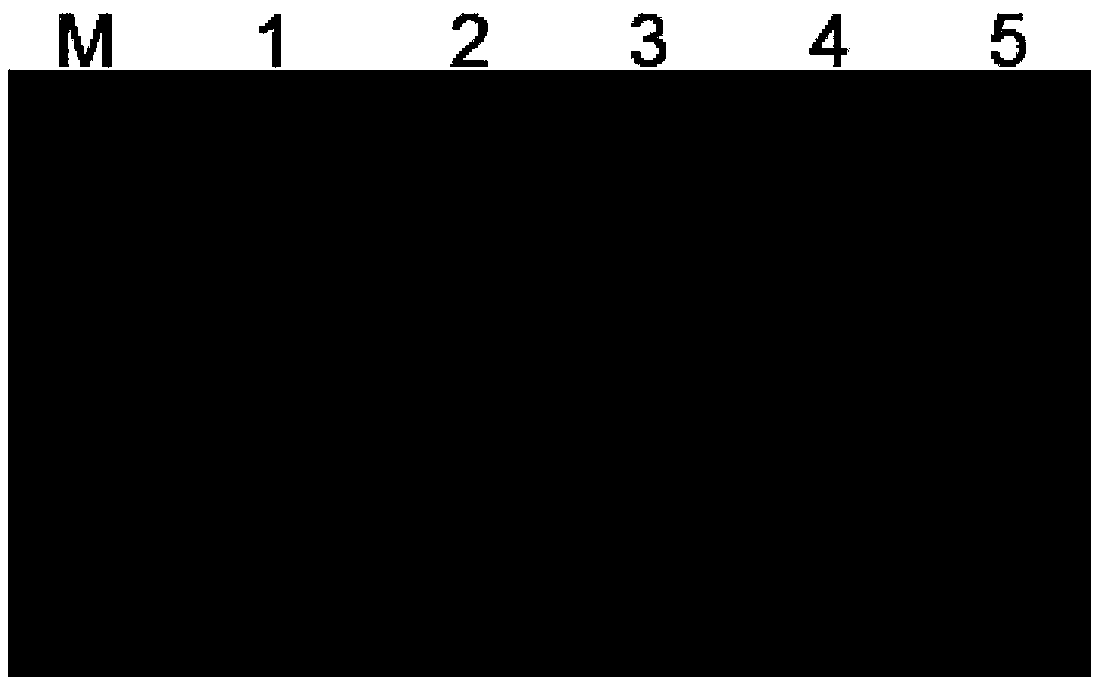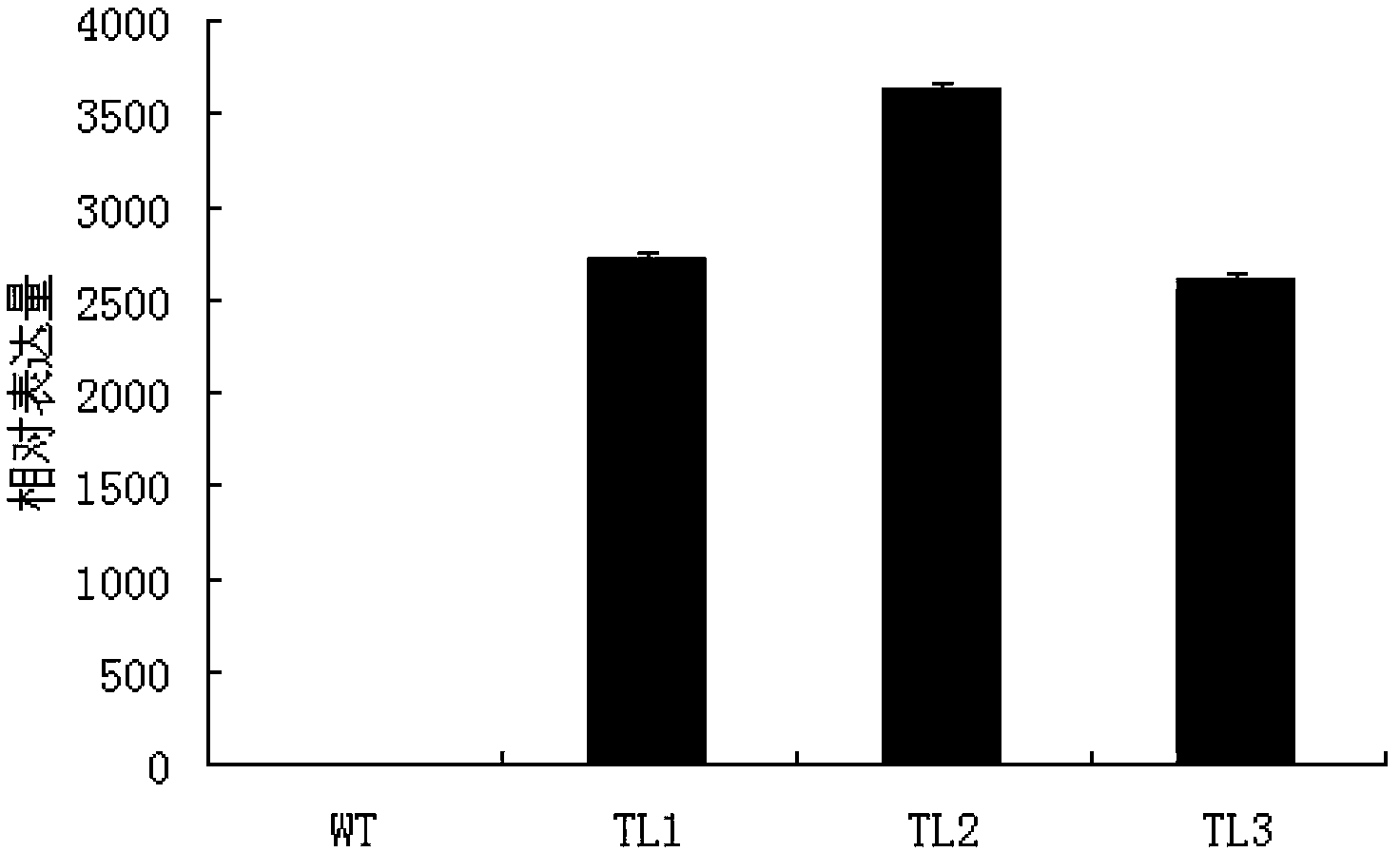Plant low potassium stress resistant related protein GmWRKY50 as well as encoding gene and application thereof
A low-potassium tolerance gene technology, applied in the plant low-potassium stress-resistant protein GmWRKY50 and its coding gene and application field, can solve the problems of restricting crop yield, affecting the normal growth and development of plants, and large potassium consumption
- Summary
- Abstract
- Description
- Claims
- Application Information
AI Technical Summary
Problems solved by technology
Method used
Image
Examples
Embodiment 1
[0040] Embodiment 1, acquisition of soybean protein GmWRKY50 and its coding gene and recombinant expression vector
[0041] Total RNA was extracted from seedling leaves of soybean line 06-71 (Glycine max(L.)Merr.) cultured under normal conditions, and cDNA was obtained by reverse transcription. Using the cDNA as a template, primers PF and PR Under the guidance, use the conventional PCR method to amplify. After the reaction, the PCR amplification product is subjected to 1% agarose gel electrophoresis detection, and a DNA fragment of about 1 kb is recovered and purified; the vector pCXSN (T-DNA in the vector pCXSN The fragment contains the lethal gene ccdB, flanked by XcmI restriction recognition sequences. The vector was purchased from the Arabidopsis Biological Resource Center (The Arabidopsis Biological Resource Center, ABRC; website: http: / / abrc.osu.edu / ) , the product catalog number is Vector: 5019471951) was digested with XcmⅠ, and the vector skeleton fragment was recover...
Embodiment 2
[0045] Embodiment 2, the acquisition of recombinant Agrobacterium tumefaciens
[0046] The recombinant vector pCXSN-GmWRKY50 obtained in Example 1 was transformed into Agrobacterium tumefaciens GV3101 by freeze-thaw method (document: Amanda M Davis, Anthony Hall, Andrew J Millar, Chiarina Darrah and Seth J Davis, Protocol: Streamlined sub-protocols for floral- dip transformation and selection of transformants in Arabidopsis thaliana, 2009, 5:310.1186 / 1746-4811-5-3; the public can obtain from the Institute of Oil Crops, Chinese Academy of Agricultural Sciences), and obtain Agrobacterium tumefaciens GV3101 containing the recombinant vector pCXSN-GmWRKY50 , and the recombinant Agrobacterium was named GV3101 / pCXSN-GmWRKY50;
[0047] The empty vector pCXSN was transformed into Agrobacterium tumefaciens GV3101 by freeze-thawing method to obtain Agrobacterium tumefaciens GV3101 containing the empty vector pCXSN, and the recombinant Agrobacterium was named GV3101 / pCXSN.
Embodiment 3
[0048] Embodiment 3, the acquisition and identification of transgenic Arabidopsis
[0049] 1. Obtaining transgenic Arabidopsis
[0050] Using the two recombinant Agrobacteria obtained in Example 2, 180 strains of Columbia ecotype Arabidopsis Columbia-0 (hereinafter referred to as wild-type Arabidopsis WT) were transformed by flower bud soaking method (document: Xia T, Xiao D, Liu D , Chai W, Gong Q, Wang NN. Heterologous expression of ATG8c from soybean confers tolerance to nitrogen deficiency and increases yield in Arabidopsis. PLoS One. 2012;7(5):e37217; publicly available from Institute of Oil Crops, Chinese Academy of Agricultural Sciences ), to obtain T 3 3 Arabidopsis lines homozygous transgenic GmWRKY50, T 3 Generation of 3 Arabidopsis lines that were homozygously transformed into empty vectors, the specific method is as follows:
[0051] 1. Take the recombinant Agrobacterium GV3101 / pCXSN-GmWRKY50 or GV3101 / pCXSN and culture it with YEP medium containing 50 μg / ml kan...
PUM
 Login to View More
Login to View More Abstract
Description
Claims
Application Information
 Login to View More
Login to View More - R&D
- Intellectual Property
- Life Sciences
- Materials
- Tech Scout
- Unparalleled Data Quality
- Higher Quality Content
- 60% Fewer Hallucinations
Browse by: Latest US Patents, China's latest patents, Technical Efficacy Thesaurus, Application Domain, Technology Topic, Popular Technical Reports.
© 2025 PatSnap. All rights reserved.Legal|Privacy policy|Modern Slavery Act Transparency Statement|Sitemap|About US| Contact US: help@patsnap.com



